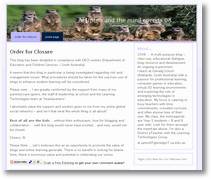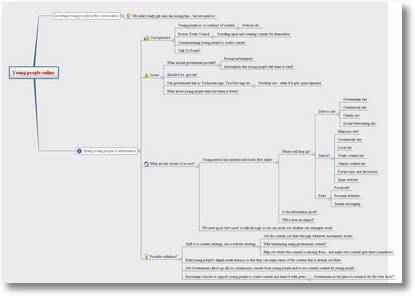danah boyd, US based researcher of all things social networking and youth, has put out a much needed call – looking to track down practice on-the-ground where professionals and volunteers working with young people are addressing online safety in their day-to-day work. As I’ve argued when talking about youth work and social networking it’s essential for all practitioners who work with young people to be aware of the internet as an element of young people’s lives, and then to think about how they might support young people to navigate risks and make the most of online opportunities – not by delivering scary presentations about online dangers – but by weaving in consideration of online safety to their regular practice. That might be through explicitly designed activities, or just asking the right questions at the right times.
Like danah, I’ve been talking a lot about the importance of this, but when it comes to finding good examples of it happening on the ground – I draw a blank. Not because it’s not happening – but because, as I discovered in the Action Research for the Youth Work and Social Networking Project, good innovative practitioners are often getting on with being practitioners – not creating case studies for researchers and policy makers. That said, I know a smattering of innovative practitioners do read or stumble across this blog from time-to-time, and hearing your/their stories about addressing online safety in a realistic and grounded way would make a real difference to the debate about how to best support young people on the web.
So – I’ll share with you danah’s call for input, and encourage you, whether you a are a practitioner working with young people, and including online safety in your work – however light-touch and occaisional – or you know practitioners who address online safety in innovative ways, to drop in a comment – either on this blog post, or on danah’s original.
I need your help. One of our central conclusions in the Internet Safety Technical Task Force Report was that many of the online safety issues require the collective engagement of a whole variety of different groups, including educators, social workers, psychologists, mental health experts, law enforcement, etc. Through my work on online safety, I’ve met a lot of consultants, activists, and online safety experts. Through my work as a researcher, I’ve met a lot of practitioners who are trying to engage youth about these issues through outright fear that isn’t grounded in anything other than myth.
Unfortunately, I haven’t met a lot of people who are on the ground with youth dealing with the messiness of addressing online safety issues from a realistic point of view. I don’t know a lot of practitioners who are developing innovative ways of educating and supporting at-risk youth because they have to in their practices. I need your help to identify these people.
I know that there are a lot of people out there who are speaking about what these partitioners should do, who are advising these practitioners, or who are trying to build curricula/tools to support these practitioners, but I want to learn more about the innovative practitioners themselves.
Please… who’s incorporating sensible online safety approaches into their daily practice with youth in the classrooms, in therapy, in social work, in religious advising, etc.? Who’s out there trying to wade through the myths, get a realistic portrait, and approach youth from a grounded point of view in order to directly help them, not as a safety expert but as someone who works with youth because of their professional role? Who do I need to know?
(And if you’re a practitioner in the UK, or indeed from beyond the UK, who is exploring online safety and opportunity in your work with young people – do come and join fellow practitioners over in the Youth Work Online network…)
 I'm watching with interest on
I'm watching with interest on 
